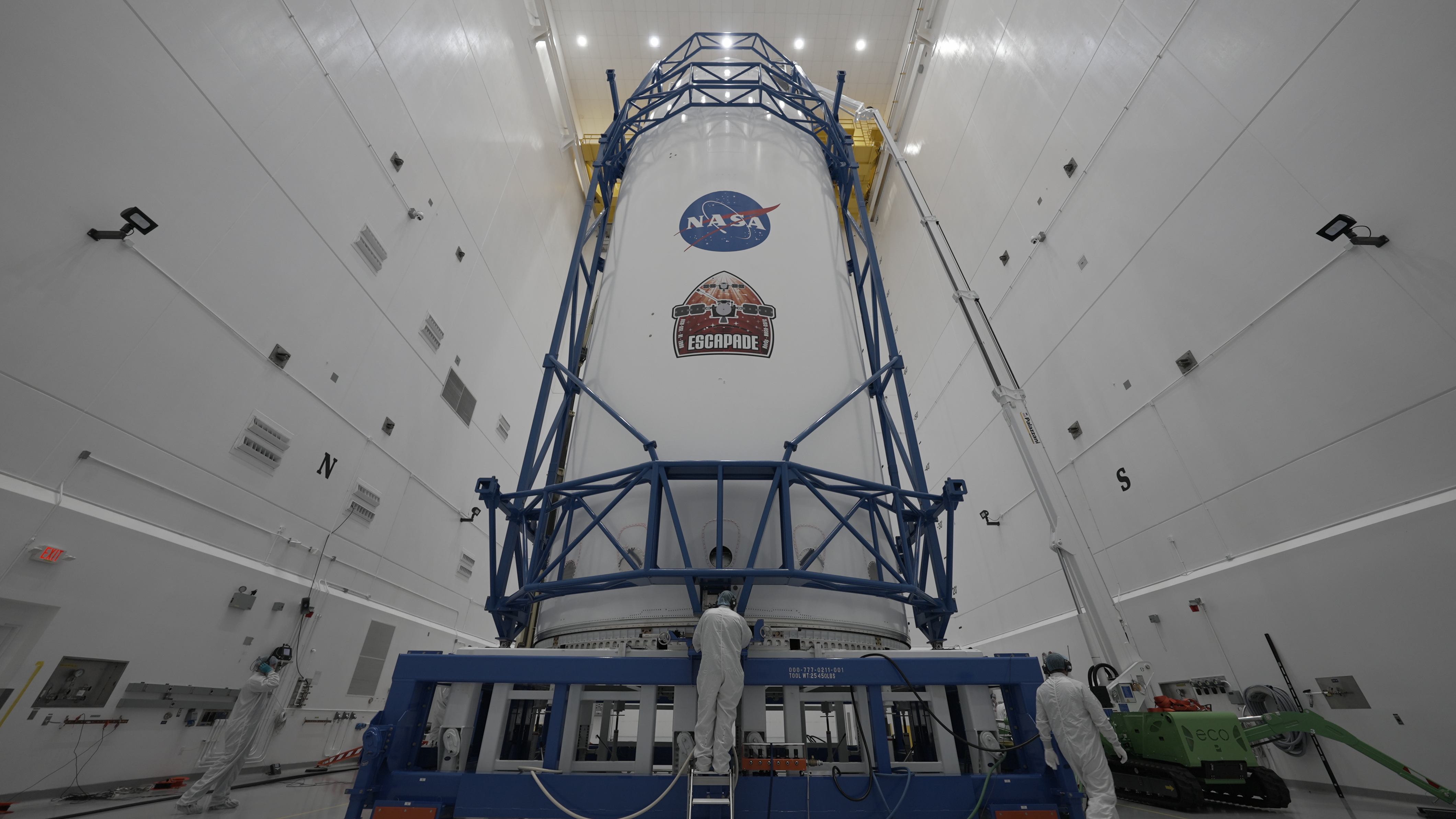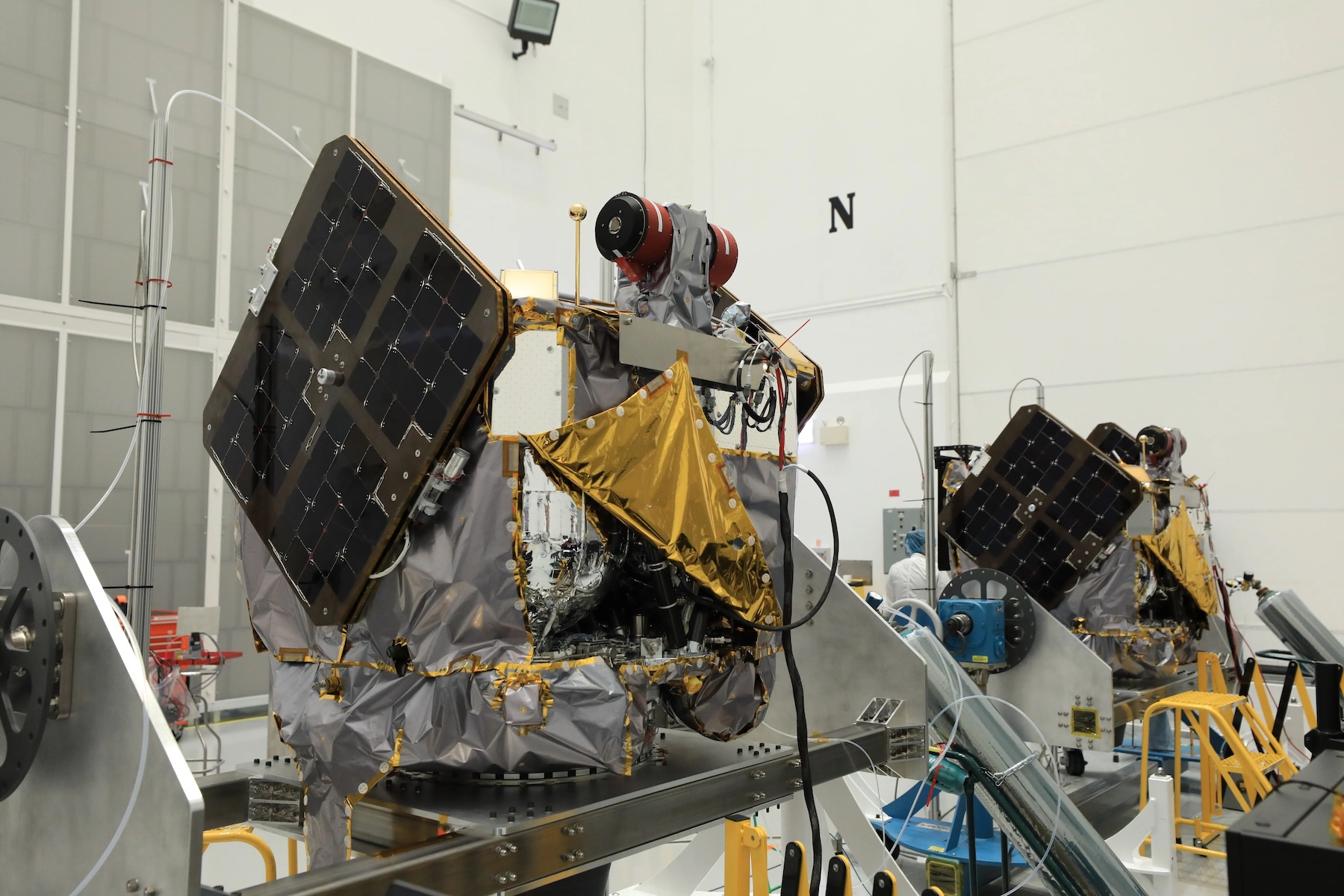Blue Origin is counting down to launch of its second New Glenn rocket Sunday.
The New Glenn rocket rolls to Launch Complex-36 in preparation for liftoff this weekend.
Credit:
Blue Origin
CAPE CANAVERAL, Florida—The field of astrodynamics isn’t a magical discipline, but sometimes it seems trajectory analysts can pull a solution out of a hat.
That’s what it took to save NASA’s ESCAPADE mission from a lengthy delay, and possible cancellation, after its rocket wasn’t ready to send it toward Mars during its appointed launch window last year. ESCAPADE, short for Escape and Plasma Acceleration and Dynamics Explorers, consists of two identical spacecraft setting off for the red planet as soon as Sunday with a launch aboard Blue Origin’s massive New Glenn rocket.
“ESCAPADE is pursuing a very unusual trajectory in getting to Mars,” said Rob Lillis, the mission’s principal investigator from the University of California, Berkeley. “We’re launching outside the typical Hohmann transfer windows, which occur every 25 or 26 months. We are using a very flexible mission design approach where we go into a loiter orbit around Earth in order to sort of wait until Earth and Mars are lined up correctly in November of next year to go to Mars.”
This wasn’t the original plan. When it was first designed, ESCAPADE was supposed to take a direct course from Earth to Mars, a transit that typically takes six to nine months. But ESCAPADE will now depart the Earth when Mars is more than 220 million miles away, on the opposite side of the Solar System.

The payload fairing of Blue Origin’s New Glenn rocket, containing NASA’s two Mars-bound science probes.
Credit:
Blue Origin
The most recent Mars launch window was last year, and the next one doesn’t come until the end of 2026. The planets are not currently in alignment, and the proverbial stars didn’t align to get the ESCAPADE satellites and their New Glenn rocket to the launch pad until this weekend.
This is fine
But there are several reasons this is perfectly OK to NASA. The New Glenn rocket is overkill for this mission. The two-stage launcher could send many tons of cargo to Mars, but NASA is only asking it to dispatch about a ton of payload, comprising a pair of identical science probes designed to study how the planet’s upper atmosphere interacts with the solar wind.
But NASA got a good deal from Blue Origin. The space agency is paying Jeff Bezos’ space company about $20 million for the launch, less than it would for a dedicated launch on any other rocket capable of sending the ESCAPADE mission to Mars. In exchange, NASA is accepting a greater than usual chance of a launch failure. This is, after all, just the second flight of the 321-foot-tall (98-meter) New Glenn rocket, which hasn’t yet been certified by NASA or the US Space Force.
The ESCAPADE mission, itself, was developed with a modest budget, at least by the standards of interplanetary exploration. The mission’s total cost amounts to less than $80 million, an order of magnitude lower than all of NASA’s recent Mars missions. NASA officials would not entrust the second flight of the New Glenn rocket to launch a billion-dollar spacecraft, but the risk calculation changes as costs go down.
NASA knew all of this in 2023 when it signed a launch contract with Blue Origin for the ESCAPADE mission. What officials didn’t know was that the New Glenn rocket wouldn’t be ready to fly when ESCAPADE needed to launch in late 2024. It turned out Blue Origin didn’t launch the first New Glenn test flight until January of this year. It was a success. It took another 10 months for engineers to get the second New Glenn vehicle to the launch pad.

The twin ESCAPADE spacecraft undergoing final preparations for launch. Each spacecraft is about a half-ton fully fueled.
Credit:
NASA/Kim Shiflett
Aiming high
That’s where the rocket sits this weekend at Cape Canaveral Space Force Station, Florida. If all goe





